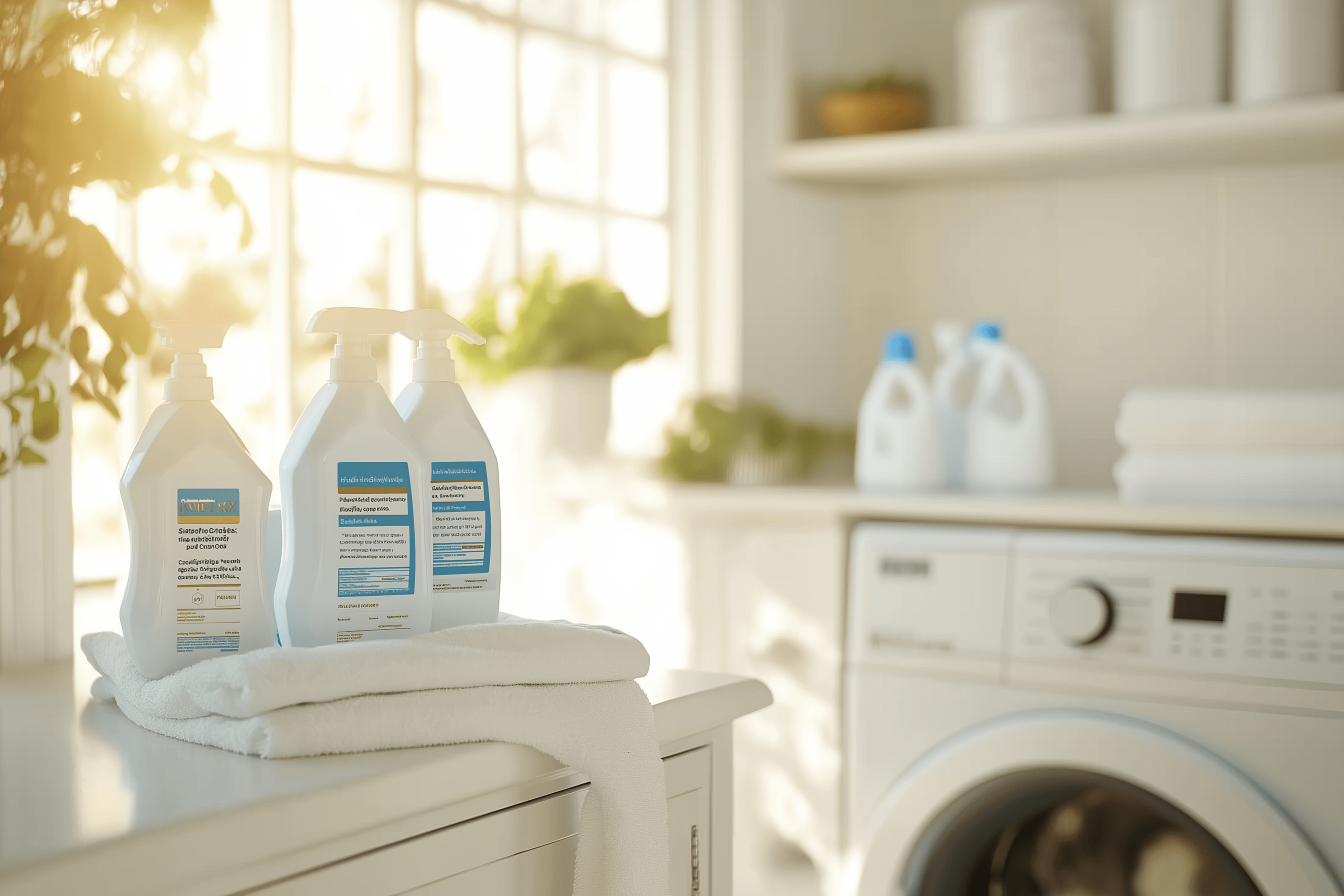Laundry is essential for removing dirt, sweat, and odors from clothing, but it’s also an opportunity to minimize allergens that can cause discomfort and health issues. Dust mites, pollen, pet dander, and other allergens can accumulate in fabrics and linger if not washed effectively. By using the right methods and products, you can reduce allergens and make laundry safer for sensitive skin, allergy sufferers, and everyone in your home.
Introduction: Why Allergen Reduction Matters
For people with allergies, asthma, or sensitive skin, allergens trapped in fabrics can cause sneezing, itching, rashes, and even respiratory issues. Reducing allergens in your laundry can make a significant difference in improving indoor air quality and health. From bedding to clothes and towels, every wash is an opportunity to eliminate potential triggers.
1. Wash with Hot Water When Possible
Washing clothes in hot water is one of the most effective ways to eliminate allergens. Dust mites, a common allergen, cannot survive temperatures above 130°F (54°C). Hot water also helps dissolve oils and residues from skin, sweat, and dirt, which can otherwise trap allergens.
- Best Practices: Check fabric labels to see if they can handle hot water. For items that are machine washable but delicate, such as bedding, wash them on a gentle cycle with warm or hot water to kill allergens effectively.
- Temperature Guide: Use at least 130°F (54°C) for towels, bedding, and cotton clothes to maximize allergen reduction.
American Academy of Dermatology’s Guide to Laundry and Allergies
2. Use a Hypoallergenic Detergent
Conventional detergents can contain fragrances, dyes, and harsh chemicals that may irritate sensitive skin or exacerbate allergies. Hypoallergenic detergents, by contrast, are formulated without these irritants and often use plant-based ingredients that are gentle on skin and fabrics.
- What to Look For: Choose a detergent that is fragrance-free, dye-free, and labeled as hypoallergenic. Biodegradable and eco-friendly detergents are also good options, as they typically contain fewer artificial additives.
- Recommended Products: Some top hypoallergenic brands include Seventh Generation Free & Clear, ECOS Hypoallergenic, and Puracy Natural Laundry Detergent.
Guide to Choosing Hypoallergenic Detergents
The Best Eco-Friendly Laundry Detergents for a Cleaner Wash
3. Add an Extra Rinse Cycle
Even if you’re using a hypoallergenic detergent, detergent residue can linger on fabrics, which can irritate skin or worsen allergies. Adding an extra rinse cycle ensures that any remaining detergent or dirt is thoroughly washed out, leaving clothes cleaner and reducing potential allergens.
- Best Practices: Use the extra rinse feature on your washing machine if available. If not, run a short additional wash cycle with no detergent to rinse the clothes again.
- Tip: For very delicate or sensitive skin, consider using a natural fabric conditioner, like distilled white vinegar, in the final rinse cycle to soften clothes and reduce detergent residue further.
Benefits of Extra Rinse Cycles
4. Dry Fabrics in High Heat or Sunlight
Dust mites and other allergens thrive in damp environments, so thoroughly drying your laundry is essential to allergen control. If you have access to a dryer, using the high-heat setting can help kill any remaining allergens, while drying fabrics outside in sunlight provides a natural disinfectant through UV rays.
- Best Practices: Use a dryer on the highest heat setting that the fabric can tolerate, as this reduces allergens more effectively than air-drying alone.
- Sunlight Tip: If drying outdoors, choose a sunny, low-pollen day to prevent allergens like pollen from settling on freshly washed fabrics. Avoid drying outside on days with high pollen counts to minimize allergen exposure.
How Sunlight Reduces Allergens
5. Clean Your Washing Machine Regularly
Your washing machine can accumulate mold, mildew, and detergent residue over time, which can transfer allergens back onto your clothes. To ensure a truly allergen-free wash, clean your machine monthly to remove any buildup and keep it in top condition.
- Cleaning Tips: Run an empty hot water cycle with 1-2 cups of white vinegar or a washing machine cleaner to dissolve any residue and kill bacteria. For front-loading machines, clean the door seal thoroughly, as it can trap moisture and attract mold.
- Maintenance Reminder: Keeping the machine door open after each wash allows it to dry completely, preventing mold growth.
Mold and Mildew in Washing Machines: Prevention Tips
Bonus Tips for Reducing Allergens in Laundry
- Wash Bedding Weekly: Bedding collects a significant amount of dust mites, pet dander, and sweat, so washing sheets and pillowcases weekly in hot water is essential for maintaining an allergen-free environment.
- Avoid Fabric Softeners: Conventional fabric softeners can leave residues that trap allergens and irritate skin. Instead, use natural alternatives like wool dryer balls or white vinegar.
- Wash New Clothes Before Wearing: New clothing can carry residual chemicals or allergens from manufacturing. Washing them before wearing can reduce potential irritants and provide a softer, cleaner wear.
- Keep Pets Off Bedding: Pet hair and dander are major allergen sources, so keeping pets off beds and regularly washing pet bedding can help minimize allergens.
Marketing Tips for Laundromats to Highlight Allergen-Free Options
If you run a laundromat, marketing your services as allergen-conscious can attract customers with sensitive skin or allergies. Here are a few ways to promote allergen-free laundry services:
- Offer Hypoallergenic Detergents: Stock hypoallergenic and eco-friendly detergents for customer use and display them prominently. Create signage to explain the benefits of allergen-free washing.
- Promote Extra Rinse and High-Heat Dry Options: If your machines have extra rinse cycles or high-heat drying options, make sure customers know they’re available. Offer these options in your “allergen-free laundry package.”
- Educate on Social Media: Share posts about allergen-free laundry tips on your social media pages. This can build trust and attract customers who value allergen-free and sensitive skin-friendly washing methods.
- Create Allergen-Free Laundry Guides: Provide a brochure or blog series on reducing allergens in laundry. Your customers will appreciate the guidance, and it positions your laundromat as a knowledgeable, customer-centered business.


















